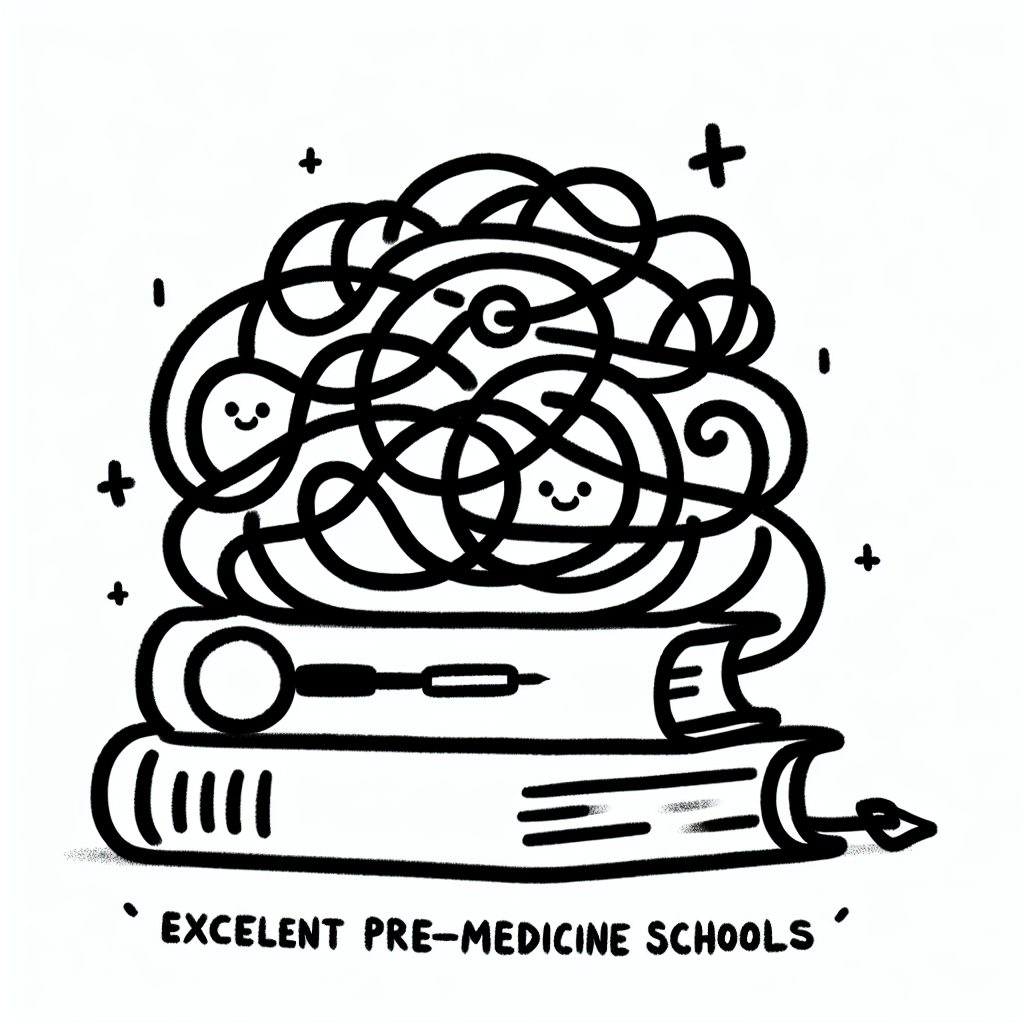Introduction
Choosing a strong pre-med program is a crucial first step for students aspiring to become doctors. Good pre med schools provide a solid academic foundation while offering the resources and support necessary to navigate the competitive path to medical school.
A strong pre-med program typically includes rigorous coursework in the sciences, opportunities for undergraduate research, and access to clinical experiences that help students gain real-world insights into the medical field. These programs also offer comprehensive advising to guide students through course selection, MCAT preparation, and the medical school application process.
The undergraduate institution a student chooses can significantly impact their readiness for medical school. Good pre med schools often have high medical school acceptance rates, reflecting the effectiveness of their preparation and support systems. When evaluating programs, students should consider factors such as academic rigor, availability of research and clinical opportunities, strength of pre-health advising, and the school's track record in placing graduates into medical schools.
Selecting the right pre-med program can make a measurable difference in a student's medical career trajectory. Good pre med schools help lay the groundwork for success in medical school and beyond.

What Makes a Great Pre-Med School?
Choosing one of the good pre med schools involves evaluating several key factors that directly impact a student’s preparation for medical school.
Academic Excellence
A strong pre-med program begins with access to the essential science and humanities courses required by medical schools: Biology, Chemistry, Physics, Math, and English. Good pre med schools offer these courses with academic rigor, often through challenging curricula designed to mirror the demands of medical education. Additionally, grading policies can influence GPA outcomes, which are a critical component of medical school applications.
Pre-Med Advising and Support
Dedicated pre-health advising offices are a hallmark of good pre med schools. These advisors help students select appropriate coursework, prepare for the MCAT, and navigate the medical school application process. Support services often include help with personal statements, interview coaching, and organizing letters of recommendation.
Research and Clinical Opportunities
Access to research and clinical experiences is another critical element. Good pre med schools often have partnerships with affiliated hospitals and research institutions, providing students with opportunities to work in labs and shadow physicians. Many also offer undergraduate research grants and fellowships, helping students gain hands-on experience that strengthens their medical school applications.
Extracurriculars and Student Organizations
Active pre-med clubs and service organizations allow students to connect with peers and engage in meaningful extracurricular activities. Good pre med schools facilitate volunteering and shadowing opportunities, both of which are key components of a competitive medical school application.
Medical School Acceptance Rates
One of the most telling indicators of a school’s pre-med program quality is its medical school acceptance rate. Good pre med schools often maintain a strong track record of graduates who are successfully admitted to medical schools, reflecting the strength of their academic preparation and support systems.

🏆 Top Pre-Med Schools by Academic Reputation and Resources
When evaluating good pre med schools, academic reputation and available resources are key indicators of success. Below are several universities and colleges recognized for their strong pre-med programs, supported by national rankings and institutional offerings.
University of California--Los Angeles (UCLA)
- National Universities Ranking: #15
- Top Public Schools Ranking: #1
- UCLA is widely considered one of the good pre med schools due to its academically rigorous pre-med curriculum, access to research through the David Geffen School of Medicine, and hands-on clinical experience available at UCLA Health.
- Source
Stony Brook University--SUNY
- National Universities Ranking: #58
- Top Public Schools Ranking: #26
- With a dedicated pre-med program and proximity to Stony Brook University Hospital, Stony Brook offers a practical and resource-rich environment, making it one of the good pre med schools in the SUNY system.
- Source
University of California, Santa Barbara (UCSB)
- National Universities Ranking: #39
- Top Public Schools Ranking: #13
- UCSB supports aspiring medical students through strong science departments and numerous undergraduate research opportunities, positioning it among good pre med schools on the West Coast.
- Source
Carnegie Mellon University
- National Universities Ranking: #21
- Known for its rigorous STEM education, Carnegie Mellon provides a solid foundation for pre-med coursework and MCAT preparation, qualifying it as one of the good pre med schools for students seeking academic intensity.
- Source
Bryn Mawr College
- National Liberal Arts Colleges Ranking: #29
- Best Undergraduate Teaching: #14
- Bryn Mawr combines small class sizes and individualized support with a strong medical school placement record, making it a standout among good pre med schools in the liberal arts category.
- Source

Additional Excellent Pre-Med School Options
When considering good pre med schools, it's important to look beyond the most obvious choices. Several types of institutions offer unique advantages for aspiring medical students.
Liberal Arts Colleges
Liberal arts colleges can be some of the best environments for pre-med students due to their smaller class sizes and emphasis on undergraduate teaching. These schools often provide personalized advising and strong mentorship, which can be beneficial when preparing for medical school applications. Swarthmore, Amherst, and Bowdoin are notable examples. Each offers rigorous science programs and close-knit academic communities that support student success in pre-med pathways.
Research Universities
Large research universities are also among the top choices for good pre med schools. These institutions typically have access to substantial funding, renowned faculty, and state-of-the-art research facilities. Students benefit from a wide range of biomedical research opportunities and exposure to complex healthcare topics. Johns Hopkins University, the University of Michigan, and the University of North Carolina-Chapel Hill are prominent examples, consistently recognized for their strong science curricula and pre-health advising services.
Schools with Medical School Affiliations
Another category of good pre med schools includes universities affiliated with medical centers. These affiliations often provide undergraduates with enhanced opportunities for clinical exposure, shadowing, and research. For example, Northwestern University is closely connected with the Feinberg School of Medicine, Emory University partners with Emory Healthcare, and Boston University shares resources with the BU School of Medicine. These relationships can give students a competitive edge when applying to medical schools by offering real-world experience in medical settings.

How to Evaluate Pre-Med Schools for Yourself
Choosing among good pre med schools requires a clear, methodical approach. Here’s a step-by-step guide to help you evaluate programs based on your goals and needs.
Step-by-Step Guide
- Assess Pre-Med Advising and Support
Strong advising can make a significant difference in your medical school application process. Look for schools with dedicated pre-health advisors, workshops on application strategies, and committee letters of recommendation. - Investigate Research and Clinical Experience Availability
Good pre med schools offer abundant opportunities for hands-on experience. Research whether undergraduates can participate in faculty-led studies or gain early access to clinical settings, such as nearby hospitals or community clinics. - Review Academic Rigor and Grading Policies
Understand the difficulty of science coursework and the fairness of grading. While academic rigor is important, extremely competitive grading (e.g., grade deflation) can impact your GPA and medical school prospects. - Analyze Medical School Acceptance Rates
Ask for statistics on how many students apply to med school and what percentage are accepted. While acceptance rates don’t tell the whole story, they provide context for how effectively the school supports pre-med students. - Visit Campuses and Speak with Current Students
Firsthand experience is invaluable. During your visit, ask detailed questions to assess the school’s fit for your pre-med journey.
Questions to Ask on Campus Visits
- How many students apply to med school annually?
- What percentage are accepted?
- Are there structured MCAT prep programs?
- What shadowing or volunteering opportunities exist?
By evaluating these factors, you can determine whether a school qualifies as one of the good pre med schools for your specific academic and career goals.

Cost Considerations and Financial Aid
When evaluating good pre med schools, cost is a major factor for many students. The choice between public and private institutions can significantly affect both tuition expenses and available financial support.
Public vs. Private Institutions
Public universities often offer lower tuition rates for in-state students, making them a more affordable option for residents. Out-of-state students at public schools, however, may face higher costs that approach or even exceed those of private institutions. Private schools typically charge the same tuition for all students, regardless of residency, but they may also provide more generous financial aid packages. Some private institutions have substantial endowments and offer need-based aid that can reduce the net cost significantly for qualifying students.
Scholarships and Pre-Med Funding
Good pre med schools frequently provide merit-based scholarships to attract top-performing STEM students. These scholarships can help reduce the financial burden and allow students to focus more on academics and extracurriculars. Additionally, many schools offer funding for research or summer programs, which not only support students financially but also enhance medical school applications. Access to these resources can be a deciding factor when choosing between institutions.

Final Thoughts: Choosing the Right Pre-Med School for You
When exploring good pre med schools, it's important to understand that there is no single “best” option for every student. What works for one person may not be the ideal fit for another. Choosing the right program requires a thoughtful evaluation of your individual needs and goals.
Start by considering your learning style. Some students thrive in large research universities with access to cutting-edge labs, while others may prefer the close-knit feel of smaller liberal arts colleges. Budget is another crucial factor—compare tuition, availability of financial aid, and living expenses to determine what’s financially sustainable for you.
Location also plays a big role. Proximity to family, climate preferences, and access to hospitals or clinical opportunities can all impact your experience. Additionally, think about your long-term goals. If you’re aiming for a top-tier medical school, you’ll want a strong academic foundation and ample research or extracurricular opportunities.
Ultimately, good pre med schools offer a balance of academic rigor, support systems like advising and mentoring, and resources that promote student well-being. Prioritize programs that align with your personal and professional aspirations to set yourself up for long-term success.

📚 References and Sources
The following sources provide rankings and details about institutions frequently recognized as good pre med schools:
- UCLA - U.S. News Rankings
- Stony Brook University - U.S. News Rankings
- University of California, Santa Barbara - U.S. News Rankings
- Carnegie Mellon University - U.S. News Rankings
- Bryn Mawr College - U.S. News Rankings














